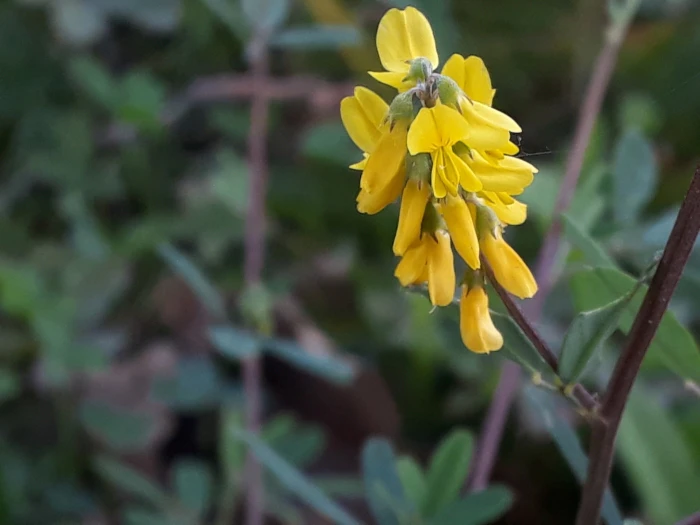Tall Yellow Sweetclover
(Melilotus altissimus)
Tall Yellow Sweetclover (Melilotus altissimus)
/
/

© euanmck
CC BY 4.0
Image By:
© euanmck
Recorded By:
Copyright:
CC BY 4.0
Copyright Notice:
Photo by: © euanmck | License Type: CC BY 4.0 | License URL: http://creativecommons.org/licenses/by/4.0/ | Uploader: euanmck | Publisher: iNaturalist |






















Estimated Native Range
Climate Requirements for Salisbury, North Carolina
| This Plant | Your Site | Plant Suitability for Your Location | ||
|---|---|---|---|---|
| • Precipitation | 13" - 110" | 44" | Aquatic | Aquatic |
| • High Temp. | 46°F - 95°F | 90°F | Your summer temperatures are normal for this plant. | Excellent |
| • Low Temp. | -3°F - 44°F | 28°F | Your winter temperatures are normal for this plant | Excellent |
This plant may not grow well at your location - your precipitation is too high.
Summary
Melilotus altissimus, commonly known as tall yellow sweetclover or golden melilot, is a biennial or short-lived perennial herb native to Eurasia and North Africa, typically found in open areas such as fields, roadsides, and waste places. It has been introduced to North America and other regions where it can become invasive. This species can reach a height of 3-8 feet (1-2.5 meters) and has a spread of 2-3 feet (0.6-0.9 meters). The plant features trifoliate leaves and small, fragrant yellow flowers that bloom in elongated clusters from late spring to late summer, providing a long flowering season. The flowers are highly attractive to bees and other pollinators.
Tall yellow sweetclover is valued for its nitrogen-fixing ability, which can improve soil fertility, and its deep root system that helps prevent soil erosion. It is often used in agriculture as a green manure crop and forage for livestock. In gardens, it can be used in wildflower meadows or as a temporary filler. It thrives in full sun and is tolerant of a wide range of soil types, including those with poor fertility, but prefers well-drained soils. While generally low-maintenance, it can self-seed prolifically and may require management to prevent unwanted spread.CC BY-SA 4.0
Tall yellow sweetclover is valued for its nitrogen-fixing ability, which can improve soil fertility, and its deep root system that helps prevent soil erosion. It is often used in agriculture as a green manure crop and forage for livestock. In gardens, it can be used in wildflower meadows or as a temporary filler. It thrives in full sun and is tolerant of a wide range of soil types, including those with poor fertility, but prefers well-drained soils. While generally low-maintenance, it can self-seed prolifically and may require management to prevent unwanted spread.CC BY-SA 4.0
Plant Description
- Plant Type: Herb
- Height: 4-8 feet
- Width: 1-2 feet
- Growth Rate: Rapid
- Flower Color: Yellow
- Flowering Season: Summer
- Leaf Retention: Semi-deciduous
Growth Requirements
- Sun: Full Sun, Part Shade
- Water: Medium
- Drainage: Fast, Medium, Slow
Common Uses
Bee Garden, Edible*Disclaimer: Easyscape's listed plant edibility is for informational use. Always verify the safety and proper identification of any plant before consumption., Erosion Control, Low Maintenance
Natural Habitat
Native to Eurasia and North Africa, typically found in open areas such as fields, roadsides, and waste places
Other Names
Common Names: Tall Yellow Sweetclover, Yellow Melilot
Scientific Names: Melilotus altissimus, Medicago altissima, Melilotus adriaticus, Melilotus altissimus var. macrorhizus, Melilotus altissimus var. paluster, Melilotus brandisianus, Melilotus giganteus, Melilotus macrorrhizus, Melilotus nebrodunensis
GBIF Accepted Name: Melilotus altissimus